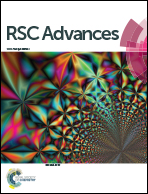A novel strategy based on surfactant assisted electromembrane extraction for the determination of dicamba and 2,4-DB as model herbicides in real water samples
Abstract
In the present research, surfactant assisted electromembrane extraction (SEME) coupled with capillary electrophoresis (CE) was developed for the determination of 3,6-dichloro-2-methoxybenzoic acid (dicamba) and 4-(2,4-dichlorophenoxy)butyric acid (2,4-DB) in real water samples. The addition of a surfactant in the donor solution improved the analyte transport into the lumen of hollow fibers that resulted in an enhancement in the analytes migration into the acceptor solution. To understand the effect of surfactant on the extraction efficiency, a comparative study was carried out between electromembrane extraction (EME) and SEME methods. Several parameters effective on extraction efficiency were studied and optimized (type of organic solvent, type and concentration of surfactant, pH of the donor and acceptor phases, stirring rate, time, and salt addition). In the optimum conditions, the limits of detection were obtained as 6.03 ng mL−1 for 2,4-DB and dicamba, respectively. The method was reproducible so that intra and inter day relative standard deviations (RSDs%) were less than 8.9% for both analytes. Finally the optimized method was successfully employed for the determination of dicamba and 2,4-DB in the real water samples.


 Please wait while we load your content...
Please wait while we load your content...